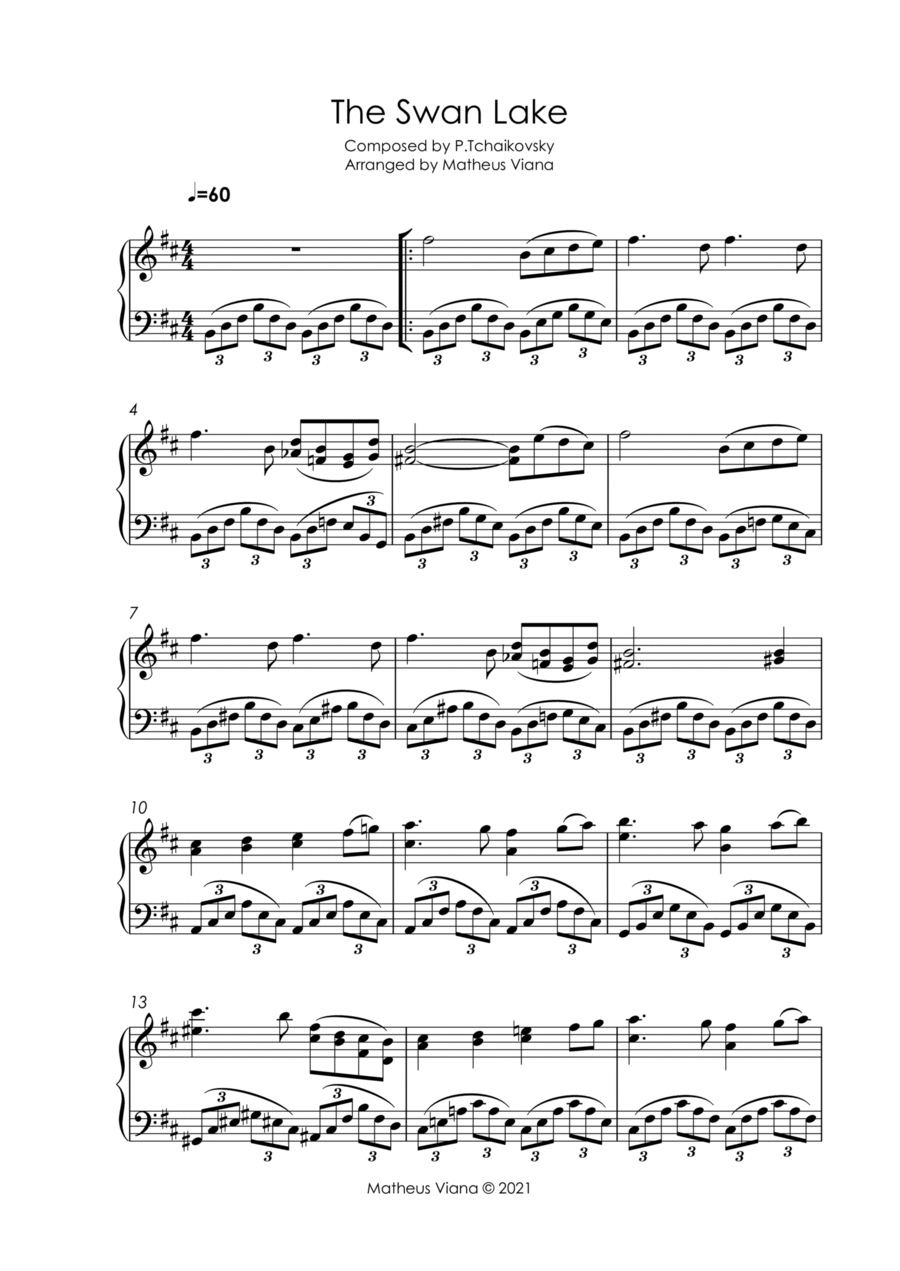Piano Solo - Level 2 - Digital Download SKU: A0.963132 Composed by P. Tchaikovski. Arranged by Matheus Viana. Romantic Period,Standards,Wedding. Score. 2 pages. Matheus Viana #6424707. Published by Matheus Viana (A0.963132). This is an arrangement for piano solo of the main theme of The Swan Lake, composed by P. Tchaikovsky. This arrangement was made to be simple and have some interesting lines on the left hand, this way the most intermediate players will be satisfied of play this piece. The Swan Lake, Ballet music, Piano arrangement, Tchaikovsky, Classical composition, Sheet music, Graceful melody, Enchanting tune, Romantic atmosphere, Odette and Odile, Ballet piano, Majestic swans, Keyboard rendition, Musical masterpiece, Swan Lake piano cover, Chords and arpeggios, Elegant dance, Balletic piano, Timeless classic, Instrumental version, Balletic grace, Keyboard performance, Ballet solo, Tchaikovsky's masterpiece, Dance of the Swans, Swan theme, Melodic beauty, White swan, Black swan, Balletic expression, Poetic piano, Balletic storytelling, Musical interpretation, Odette's theme, Dramatic piano, Balletic emotions, Lake of dreams, Romantic piano, Balletic artistry, Musical enchantment, Balletic magic, Balletic passion, Swan Lake suite, Keyboard virtuosity, Balletic elegance, Balletic romance, Grand piano rendition, Tchaikovsky's brilliance, Balletic precision, Balletic movement, Balletic grandeur, Dance of love, Piano ballet, Swan Lake fantasy, Balletic inspiration, Musical storytelling, Balletic fantasy, Piano virtuoso, Balletic gracefulness, Emotional piano, Balletic drama, Enchanted lake, Keyboard expressiveness, Balletic splendor, Musical poetry, Balletic intensity, Swan Lake waltz, Balletic serenity, Piano dramatics, Balletic finesse, Swan Lake overture, Keyboard dynamics, Balletic expressionism, Poignant piano, Balletic beauty, Swan Lake emotions, Balletic serenade, Piano brilliance, Balletic allure, Swan Lake elegance.
